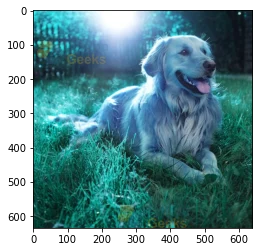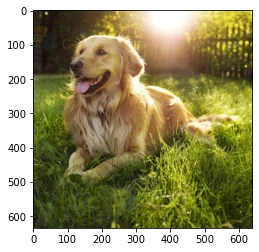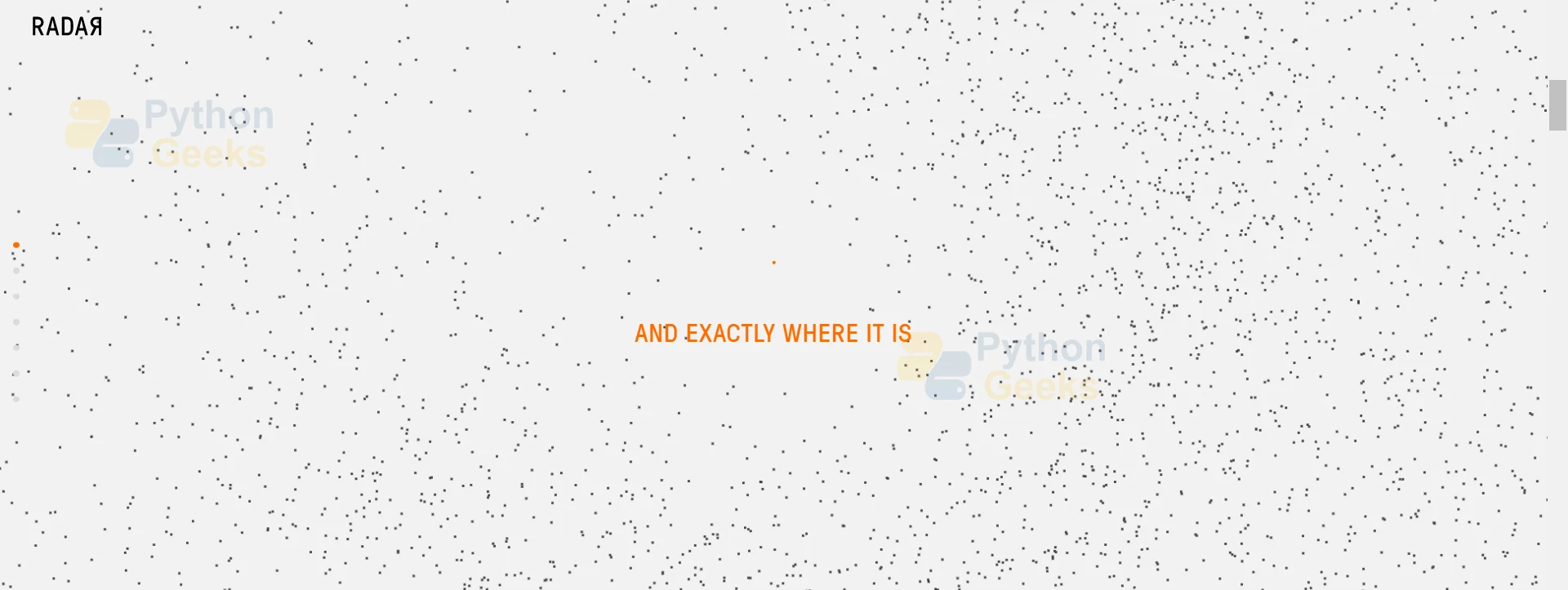What is OpenCV? – An Introduction Guide
FREE Online Courses: Click, Learn, Succeed, Start Now!
Introduction to OpenCV
This article aims to define and explore the domain of Computer vision using Python’s dynamic, versatile and multifaceted library, OpenCV.
First, let us start by understanding what we mean by computer vision. Computer vision is a part of Artificial Intelligence (AI), that enables computers to gain meaningful insights from the data provided to it (the data can be in the form of images, videos, or any other visual input) and make relevant decisions based on the knowledge it acquired from the given data. Computer vision provides the computer with the ability to see the world around as humans do. It enables them to possess the intelligence to distinguish physical features and recognize objects.
What is OpenCV?
OpenCV stands for Open-Source Computer Vision (Library). It is the most common and popularly used, well-documented Computer Vision library. OpenCV is an open-source library that incorporates numerous computer vision algorithms. OpenCV increases computational efficiency and assists with real-time applications. One of the major goals of OpenCV is to provide an accessible and easy-to-use computer vision infrastructure that helps people build sophisticated computer vision applications quickly.
History of OpenCV
OpenCV was initiated at Intel in the year 1999 by Gary Bradsky. The first release of OpenCV came later in the year 2000. It was originally developed by Intel employees in a research center in Russia, but the project was taken over by a non-profit organization in 2012. OpenCV supports a multitude of Computer Vision and Machine Learning algorithms that are ever-growing.
In the initial stages of OpenCV, the goals of the company were as follows:
1. They sought to make advanced computer vision more accessible by providing open and optimized code for computer vision implementation.
2. The company aimed to essential open-source computer vision knowledge by providing a common platform that developers could build on, to make the code readily readable and transferable.
3. Deliver advanced commercial applications of computer vision by making portable and optimized code available for development. The OpenCV’s license provided the developers with the freedom to choose whether to open-source their product or not.
Why use OpenCV for Computer Vision Tasks?
OpenCV is a robust library and an efficient tool for image processing operations and to accomplish computer vision tasks.
1. It supports a wide range of programming languages which include C++, Java, Python, etc.
2. OpenCV-Python is the Python API version for OpenCV which combines the best features of OpenCV C++ API and Python programming language.
3. This is a cross-platform library that supports Windows, Linux, macOS, Android, and iOS.
4. It plays a major role in real-time image processing and computer vision tasks which is a necessity for modern applications. OpenCV makes use of NumPy, which is a highly optimized python library for numerical computations. All of the OpenCV array structures are converted to and from NumPy arrays.
Implementation of OpenCV
The following program shows how we can flip images using OpenCV:
# Importing OpenCV
import cv2
# Importing matplotlib pyplot
import matplotlib.pyplot as plt
# Reading the image
img = cv2.imread('C:\\Users\\tushi\\Downloads\\images\\cig.jpg')
# Displaying the image
plt.imshow(img)
# Converting bgr to rgb fix_img = cv2.cvtColor(img,cv2.COLOR_BGR2RGB) # Flipping the image # 0 means flipping the image around the x-axis PythonGeeks = cv2.flip(fix_img,0) plt.imshow(PythonGeeks)
# Positive value (1 or any other positive number) means flipping the image around the y-axis. PythonGeeks = cv2.flip(fix_img,1) plt.imshow(PythonGeeks)
Features of OpenCV
Main features of OpenCV-Python include:
1. Cross-platform: Allows installation for different environments (operating systems)
2. Portable: Transferable to any machine that can run C.
3. Open source: OpenCV is free for use under the open-source Apache 2 License.
4. Fast: OpenCV is highly optimized and makes use of NumPy functions.
5. Vast algorithms: OpenCV packages contain more than 2500 algorithms.
6. Fast prototyping: Implemented in the development of real-time applications.
7. Extensive use: Used across various organizations and companies.
OpenCV Modules
OpenCV has packages that include numerous shared or static libraries. The major modules available are as follows:
1. Core Functionality (core): It is a compact module that defines basic data structures, multi-dimensional arrays, and functions used by other modules.
2. Image Processing (imgproc): This module provides the necessary tools for image enhancement or information extraction purposes.
3. Video Analysis (video): Video analysis modules include the algorithms for motion detection, background removal, and object detection or recognition and localization.
4. Camera Calibration and 3D Reconstruction (calib3d): This module includes algorithms that assist in the camera calibration process and in capturing the shape and appearance of real objects.
5. 2D Features Framework (features2d): Framework to describe elementary characteristics of an image or video as the shape, color, texture, or motion, among others, and to recognize important patterns.
6. Object Detection (objdetect): This module locates objects using predefined input.
OpenCV is presently the largest computer vision library in terms of the number of functions it holds. OpenCV contains implementations of more than 2500 algorithms and has evolved tremendously over the years.
There is no apparent structure detected amongst the modules from analyzing the structure of the files.
Applications of OpenCV
OpenCV has been used in many applications, products, and research projects. These applications include:
1. Interaction with images and videos.
2. Stitching images together in satellite and web maps.
3. Image scan and alignment, medical image noise reduction.
4. Object localization, detection, recognition, and analysis using the image or video as input.
5. Security systems and surveillance or monitoring requirements.
6. Camera calibrations and 3D image reconstruction.
7. Military applications.
8. Unmanned aerial, ground, and underwater vehicles.
9. Sound and music recognition using vision recognition techniques are applied to sound spectrogram images.
10. Medical image analysis.
OpenCV Case Study
Let us understand the application of computer vision in the industry through a case study.
RADAR is a Startup that uses completely integrated hardware and software solutions for inventory management automation by making use of RFID and computer vision. RADAR aims to streamline inventory management through automated inventory counts, improved in-store replenishment and instantaneous customer stock checks.
Managing inventory efficiently arises as one of the major problems for the industry. RADAR came up with a solution with the application of computer vision along with improved location accuracy to find inventory easily and heightened speed. It introduces item-level analytics and autonomous checkout.
RADAR tracks every item in the store in real-time down to its slightest movement. With the level of precision, the inventory gets restocked instantly and staff tends to customer needs faster.
Currently, they have implemented this system across 1000+ stores with computer vision and RFID.
OpenCV Future Scope
It is hard to predict the future, but OpenCV will continue to improve its performance, add new functionality and provide easier to use interfaces.
1. Increased room for the development of enhanced applications that can be easily adapted by the users.
2. Greater support for camera-sensor combinations will assist the development of 3D applications.
3. Support for dense optical flows with increased speed of operation and improved accuracy.
4. The environment in which OpenCV is set up, will be improved.
Career in OpenCV and Computer vision
OpenCV is a great tool for developers for the implementation of image processing and computer vision applications. It is open-source and has large community support for learning, tutorials, and contributions.
OpenCV is widely used in top companies, research groups, and governmental bodies for a variety of applications. Companies like IBM, Sony, Honda, Google, Yahoo, Microsoft, Intel, Toyota employ extensive use of this library in their products. Numerous upcoming startups like Applied Minds, VideoSurf, Radar and Zeit era also make use of OpenCV.
Computer Vision skills are relevant in many potential career options. Computer vision combined with diverse skills such as Machine learning or computer graphics to make your profile stronger.
Conclusion
In this article, we covered what is OpenCV and why to choose OpenCV as a primary library for computer vision applications. We learned what computer vision is and how exactly OpenCV helps us with it, how OpenCV came to be, and why we should prefer OpenCV for computer vision tasks. Additionally, we saw the main features of OpenCV and modules that OpenCV provides for developers, real-life applications of OpenCV, case study to understand the applications of computer vision in the industry, the future scope of the library and career options in the industry.





After intro I think you should prepare a 1 month learning plan for opencv and write each day part for next 30 days.
Regards